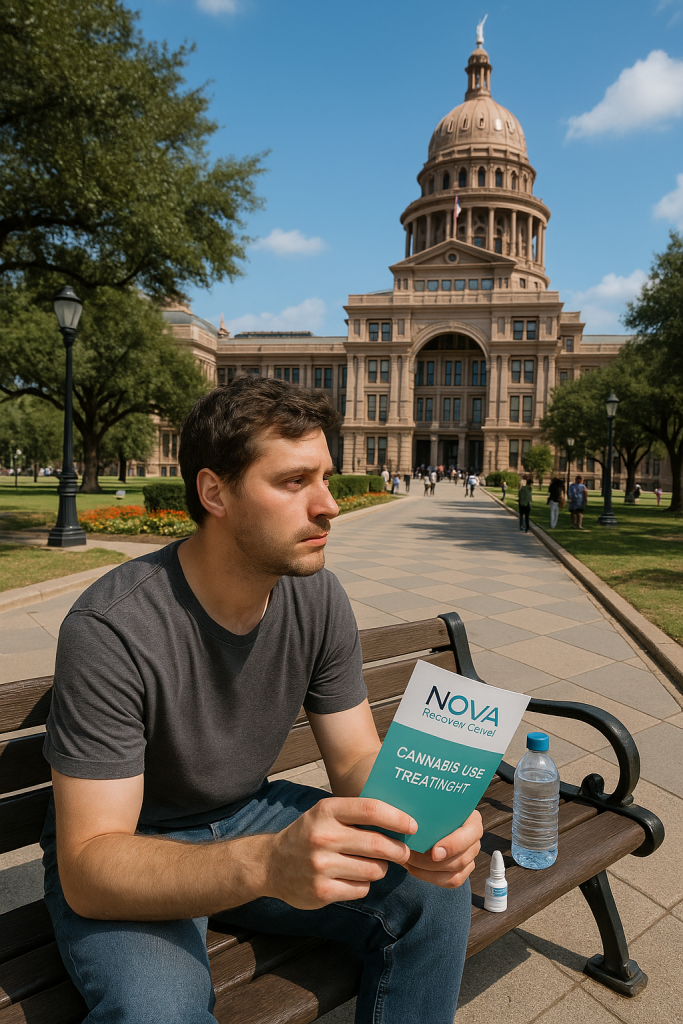Last Updated on August 12, 2025
Table of Contents
Stoned eyes are one of the most recognizable signs of marijuana use. The term refers to the appearance of red, bloodshot, or droopy eyes that often result from cannabis use. This symptom may seem harmless, but it can indicate bigger problems with substance use, like marijuana use disorder. Understanding what stoned eyes mean and how they affect the body can help individuals and families make informed decisions about health and treatment.
What Does "Stoned Eyes" Mean?
Stoned eyes, from clinical trials, typically describe dry, red, or glassy-looking eyes that result after someone smokes marijuana. The chemical in marijuana responsible for this effect is tetrahydrocannabinol (THC), which causes blood vessels in the eyes to expand. This reaction leads to redness and dryness. In many cases, artificial tears are used to relieve discomfort, but that only addresses the symptom—not the cause.
The term “stoned eyes meaning” may vary depending on context, but it’s often used to describe someone who appears visibly impaired. This can result in unsafe behavior, poor judgment, or health complications, especially if combined with other substances or medical conditions.
Signs of Marijuana Use Beyond Eye Symptoms
- Dry mouth
- Increased appetite
- Slowed reaction time
- Trouble focusing
- Lethargy
- A strong odor on clothing or breath
Someone who regularly smokes marijuana may also develop behavioral changes, such as a lack of motivation or avoidance of responsibilities. When these symptoms persist, they may indicate marijuana use disorder, a diagnosable condition that affects how a person thinks, behaves, and relates to others.
Side Effects of Marijuana Use on Eye and Body Health
The side effects of marijuana use can be short-term or long-term, and many of them go beyond the eyes. Short-term effects might include anxiety, confusion, or trouble with coordination. Long-term effects, however, can be more serious and may include mental health conditions like depression or anxiety, especially in teens and young adults.
Other negative side effects include:
- Chronic dry eyes
- High blood pressure
- Memory loss
- Increased heart rate
- Sleep disturbances
These side effects include both physical and mental risks. While some may use cannabis oil or cannabidiol (CBD) for medical reasons, recreational use—especially in high doses—can increase the risk of unwanted complications.
Understanding Long-Term Effects of Cannabis Use
Long-term effects of regular cannabis use can extend to both physical and psychological health. Smoking cannabis regularly has been associated with reduced lung function, weakened immune response, and persistent dry mouth. More concerning are the impacts on cognitive function and behavior, especially in younger users whose brains are still developing.
Research suggests that people who begin using marijuana before the age of 18 are more likely to develop marijuana use disorder. In fact, millions of people across the country struggle with substance use related to cannabis, and many do not receive the help they need.
How Smoking Cannabis Affects the Eyes
Smoking cannabis may seem harmless to some, but its effects on eye health are measurable. Dry eyes, bloodshot appearance, and blurred vision are common. These symptoms can worsen over time and lead individuals to seek over-the-counter relief, like artificial tears.
In some cases, cannabis use can also affect intraocular pressure, which may pose risks for people with glaucoma or other eye-related medical conditions. While some have proposed that marijuana may lower eye pressure temporarily, the Food and Drug Administration does not approve cannabis for this use due to a lack of long-term evidence.
Freedom Starts Here. Take Back Your Life Today.
Same-Day Admissions in Austin Available.
When to Seek Medical Attention for Stoned Eyes
Not all cases of stoned eyes require urgent care, but if symptoms persist or become painful, it’s best to seek medical attention. Some people may develop allergic reactions, infections, or worsening eye dryness with repeated cannabis use.
More importantly, red or irritated eyes can be a warning sign of broader health issues—especially when combined with confusion, difficulty breathing, or chest pain. It is always best to consult a doctor when unsure.
Smoking Marijuana and the Risk of Dependence
Although many people believe that marijuana is not addictive, it can be. The National Institute on Drug Abuse reports that about 30% of users may have some degree of marijuana use disorder. This condition involves a dependence on the drug, which may require professional help to overcome.
Individuals who smokes marijuana daily or heavily may need structured treatment programs to stop. Over time, the brain adapts to THC, and quitting can lead to withdrawal symptoms, including irritability, insomnia, and appetite loss.
Health Care and Treatment Options
If you or someone you know is experiencing problems due to cannabis use, there are several treatment options available. These may include:
- Behavior therapy: Focuses on identifying triggers and changing behaviors associated with use.
- Cognitive behavioral therapy (CBT): Helps individuals manage cravings and prevent relapse.
- Outpatient or inpatient treatment programs: Provide structure and professional support during recovery.
- Medical detox: Offers monitored withdrawal support when symptoms are severe or life threatening.
Treatment programs often include a mix of individual counseling, peer support, and medication management for co-occurring mental health conditions. Personalized care ensures that each person receives the appropriate level of care based on their specific needs.
The Role of Treatment Centers in Recovery
Nova Recovery Center offers addiction treatment help for individuals struggling with cannabis use and related disorders. Whether the issue involves stoned eyes, behavioral changes, or long-term effects from smoking cannabis, professional care can make a difference.
With a focus on whole-person healing, our center provides evidence-based strategies that address both the addiction and its underlying causes. We understand that no two individuals are alike, and we build treatment plans that reflect each person’s journey.
When Cannabis Use Becomes a Concern
While cannabis use is becoming more accepted in some regions, its impact on physical and mental health should not be overlooked. Signs of marijuana use like red eyes or mood changes can indicate deeper issues. The longer these signs go unaddressed, the more difficult recovery may become.
If you or someone close to you is dealing with negative side effects from marijuana, especially if dependence is suspected, help is available. Don’t wait until symptoms become severe or life-threatening. Contact a provider today to explore treatment options and reclaim your health.


